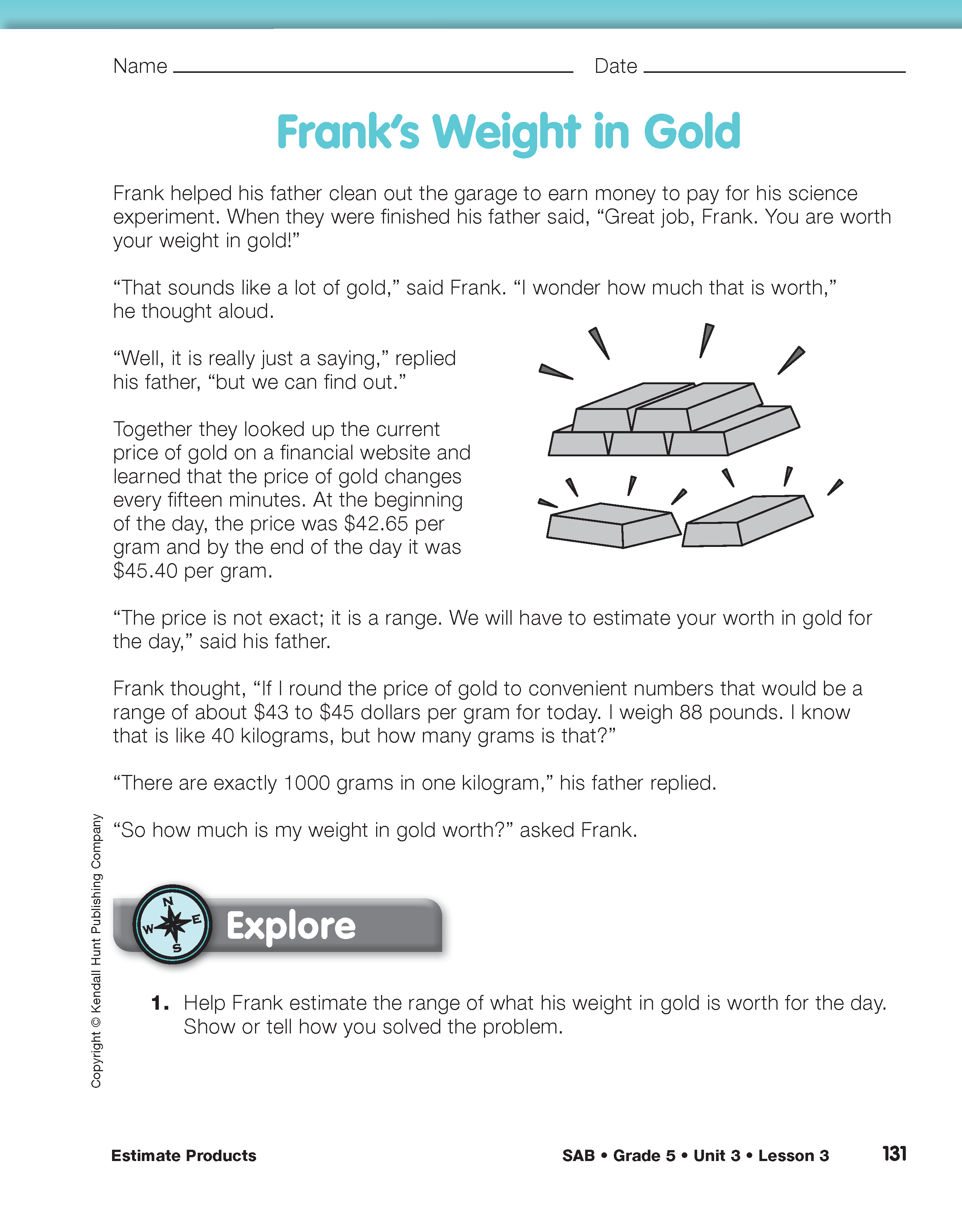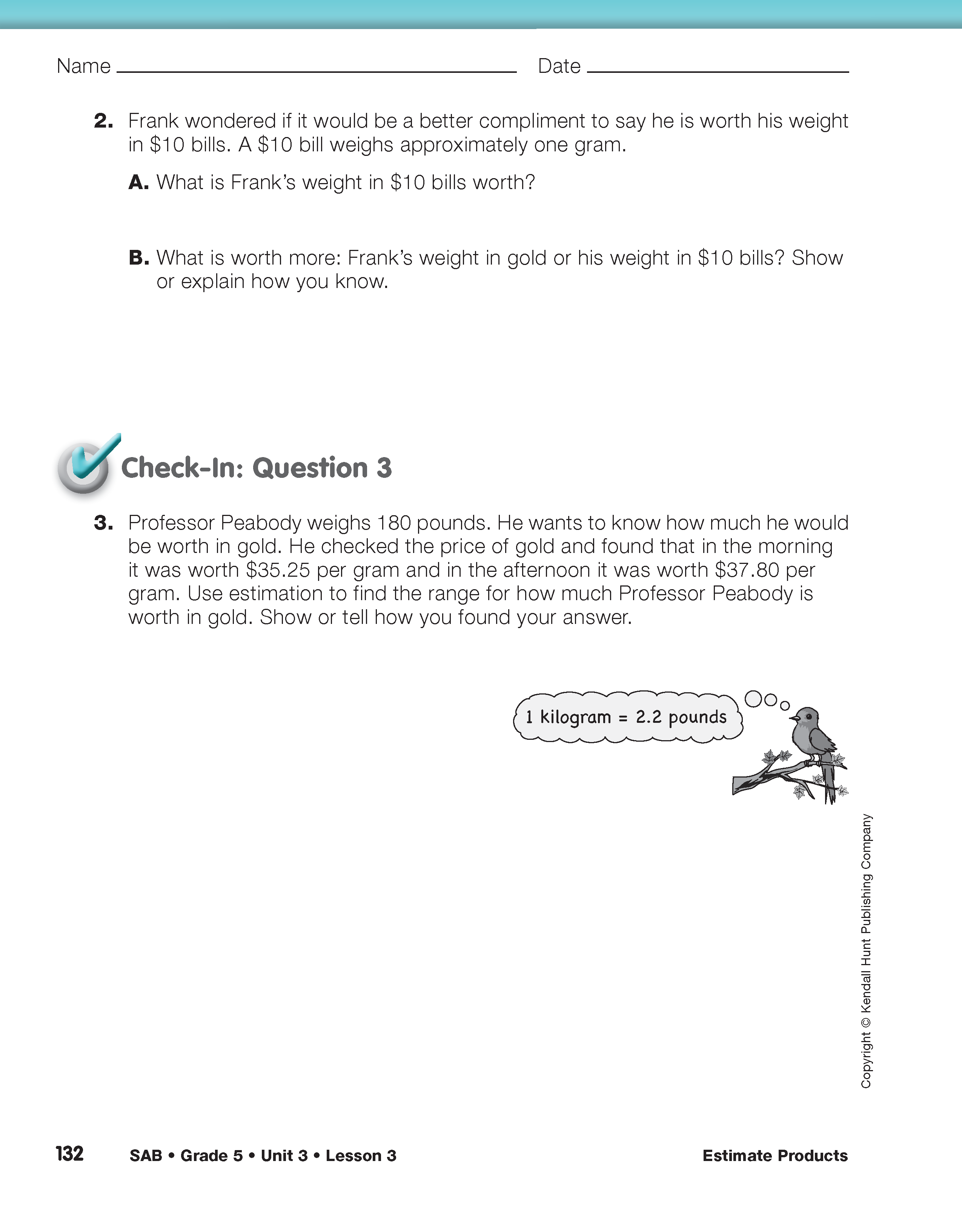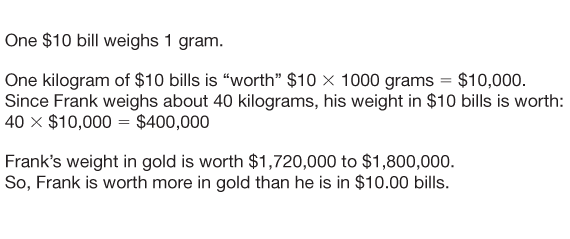Estimate Products
Est. Class Sessions: 3Summarizing the Lesson
Direct students to the Frank's Weight in Gold pages in the Student Activity Book. Begin by reading the problem together with the class.
Have students work with partners to solve both parts of the problem. In Question 1, students apply strategies for multiplying numbers ending in zeros to the context of the problem. Remind students to include proper units for each quantity that appears in the problem. See the Sample Dialog.
Question 2 may require students to invent strategies and string together several steps to solve the problem. See Figure 2 for a possible student solution.
Have pairs of students share their solutions and explanations with the class.
Students may complete Check-In: Question 3 independently. Question 3 provides an opportunity to assess students' abilities to use estimation and multiplication strategies to solve multistep problems. It also provides an opportunity to set and assess expectations for problem solving and communication. Remind students of the Math Practices page in the Student Guide Reference section.

















